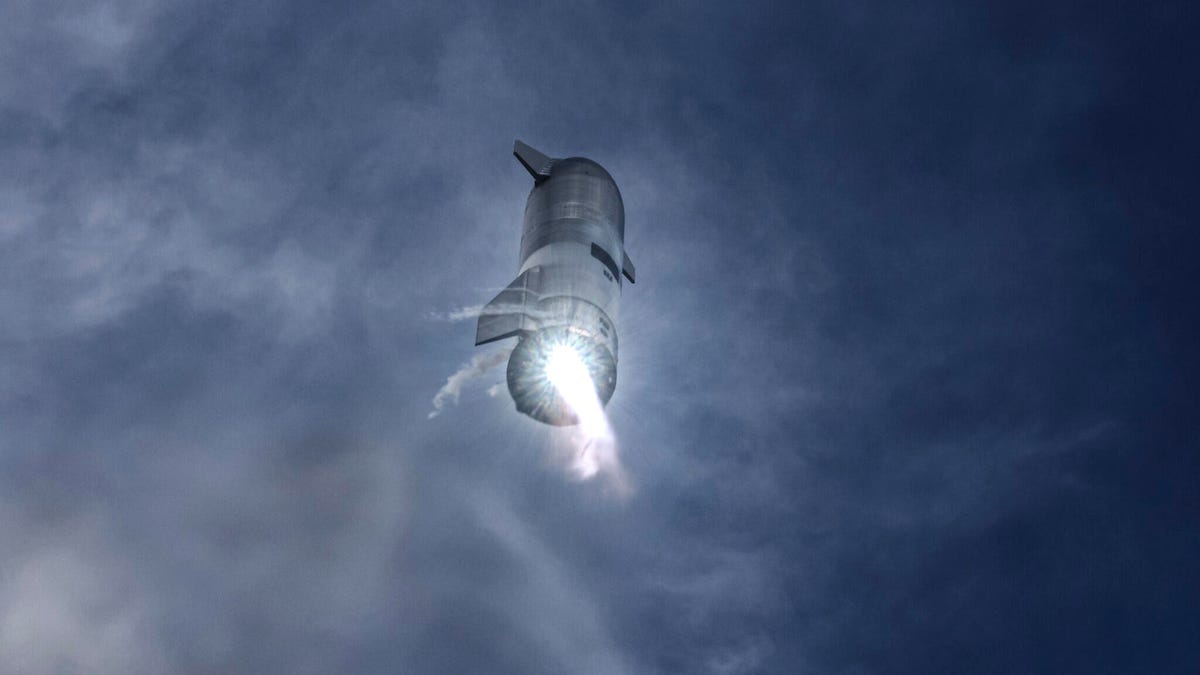SpaceX Starship's first trip to space pushed back by FAA
The government agency that issues commercial launch licenses says it needs two more months before it can give an official thumbs-up.

Starship prototype SN10 comes in for a landing.
It'll be at least two more months before Elon Musk's Starship gets the green light to blast off for space.
The Federal Aviation Administration said this week that it'll need the additional time to work through a key environmental review before issuing the launch license to SpaceX for Starship's first orbital flight.
"Due to the high volume of comments submitted ... discussions and consultation efforts with consulting parties, the FAA is announcing an update to the schedule," reads an update from the agency.
The FAA had set a previous target of Dec. 31 for issuing its environmental assessment for the first test of a Starship paired with a Super Heavy booster. The new target date for the decision is Feb. 28, 2022.
Over 18,000 public comments were submitted through the review process, which is required under federal law.
SpaceX has previously conducted several test flights of just the Starship upper stage within Earth's atmosphere, but we've yet to see a Super Heavy leave the ground. It's the combination of the two that make up the vehicle Musk aims to use to take astronauts back to the surface of the moon and eventually to take humans to Mars.
SpaceX didn't respond to a request for comment.
What the FAA is essentially evaluating right now is whether SpaceX's plan to mitigate potential impacts on the environment is sufficient. If the agency is satisfied, then we could see Starship fly to space (or at least attempt to) as soon as March. Alternately, the government may decide that a more exhaustive environmental impact review is necessary, which could delay launch by several months more.
It's also possible, of course, that the FAA delays making this decision once again come February.
For Starship, and Elon Musk's plans for Mars, delays have been part of the process for years.
Musk appeared on an episode of the Lex Fridman podcast that was also released Tuesday, where he was asked when he thought SpaceX would first land a human on Mars. Musk paused for more than 20 seconds before finally saying, "Best case is about 5 years, worst case 10 years."
Musk had initially hoped to land humans on Mars in 2024, and as recently as December 2020 he said he was "highly confident" of being able to put boots on the red planet by 2026. Now it appears that confidence is slipping, thanks in part to problems Musk has mentioned to SpaceX staff about the need to ramp up production of the next-generation Raptor engines Starship employs.
Earlier this year, Musk voiced his concern that bankruptcy was a potential risk if Starship doesn't get off the ground soon.

